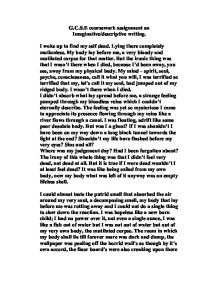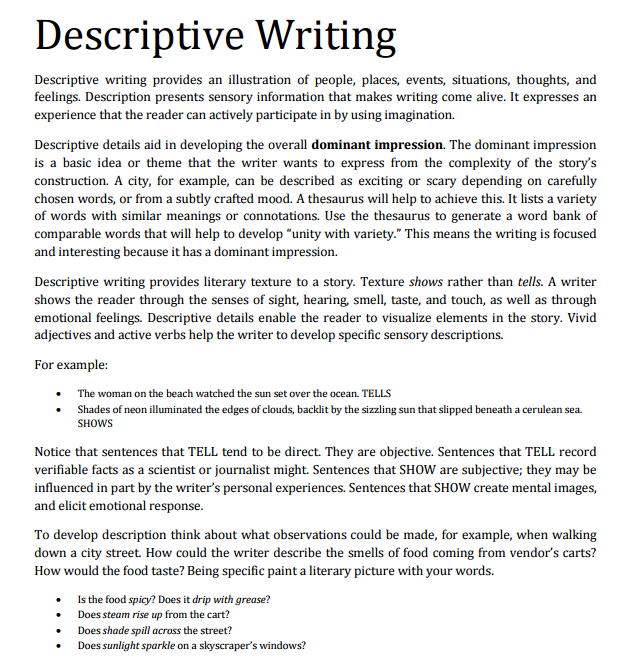Descriptive writing is a form of writing that aims to describe a person, place, object, or experience in a way that allows the reader to visualize and experience it as vividly as possible. To achieve this, descriptive writing employs a range of techniques and elements to paint a vivid and immersive picture in the reader's mind.
One important element of descriptive writing is the use of sensory details. Sensory details are descriptions that appeal to the reader's five senses: sight, hearing, touch, taste, and smell. These details help the reader to experience the subject of the description as if they were there in person. For example, a description of a beach might include sensory details such as the sound of the waves crashing against the shore, the warmth of the sun on the skin, the taste of salt on the lips, and the smell of sunscreen and sea spray.
Another key element of descriptive writing is the use of figurative language. Figurative language refers to the use of metaphors, similes, and other literary devices to describe something in a more imaginative and evocative way. For example, a person might be described as "having eyes like the ocean" or a tree might be described as "reaching for the sky like a giant green hand." Figurative language can help to bring the subject of the description to life in a more vivid and imaginative way.
Another important element of descriptive writing is the use of vivid and evocative language. This involves choosing words that are rich in detail and connotation, and using them to create a sense of atmosphere and emotion. For example, a description of a city might use words like "bustling," "vibrant," and "energetic" to convey a sense of life and excitement, while a description of a forest might use words like "peaceful," "serene," and "majestic" to convey a sense of tranquility and awe.
Finally, effective descriptive writing often employs the use of detail and specificity. This means providing specific and detailed information about the subject being described, rather than just giving general or broad-brush descriptions. For example, rather than simply saying that a person is "nice," a more effective description might include specific details about their personality and behavior, such as "kind and compassionate, with a warm smile and a willingness to listen."
In conclusion, descriptive writing is a powerful tool for bringing people, places, and things to life in the reader's mind. By using sensory details, figurative language, vivid and evocative language, and detail and specificity, writers can create immersive and powerful descriptions that allow readers to experience the subject as if they were there in person.





+Elements+of+Descriptive+Writing.jpg)

